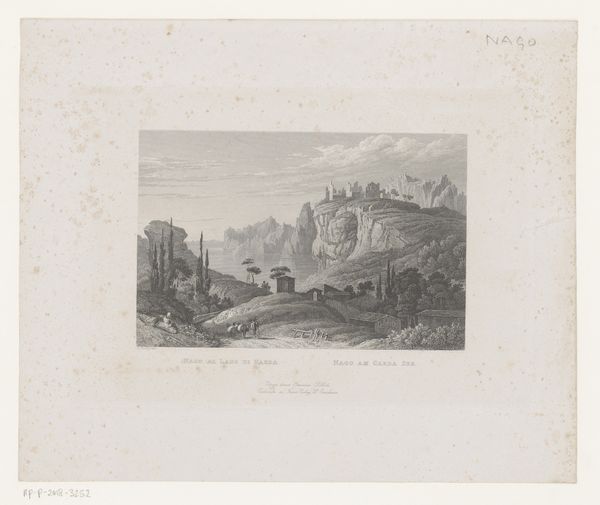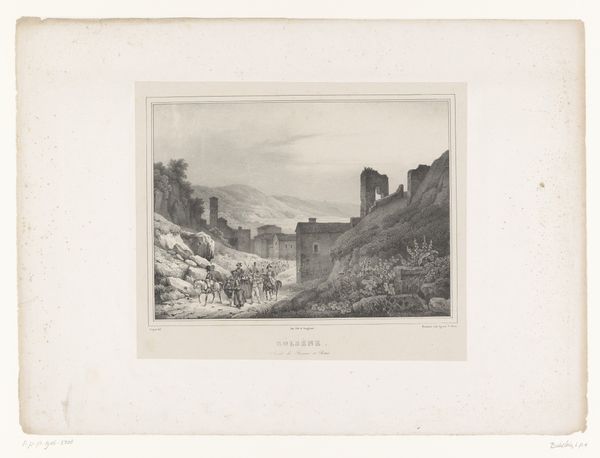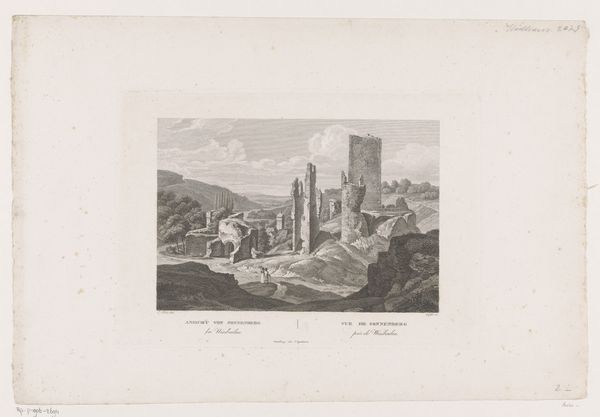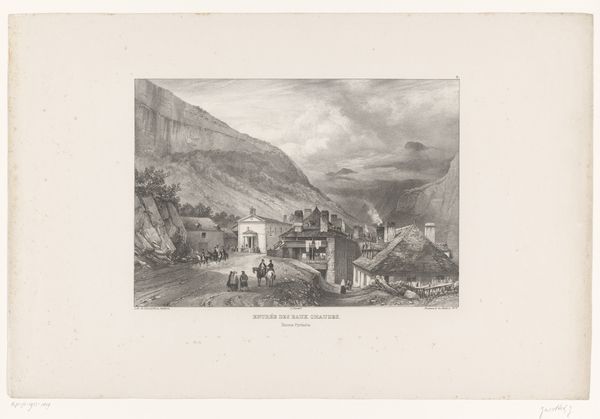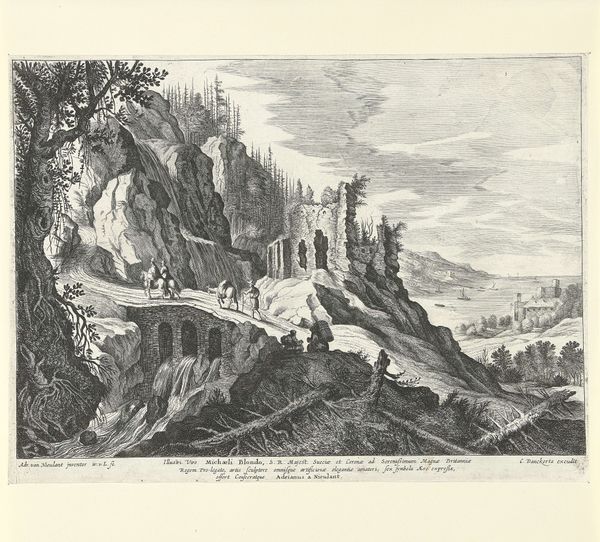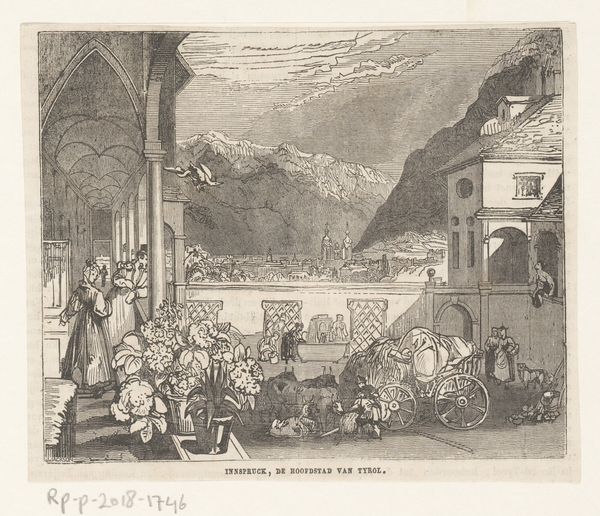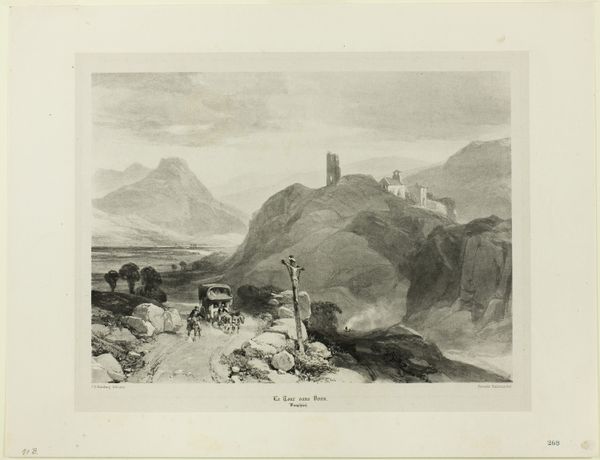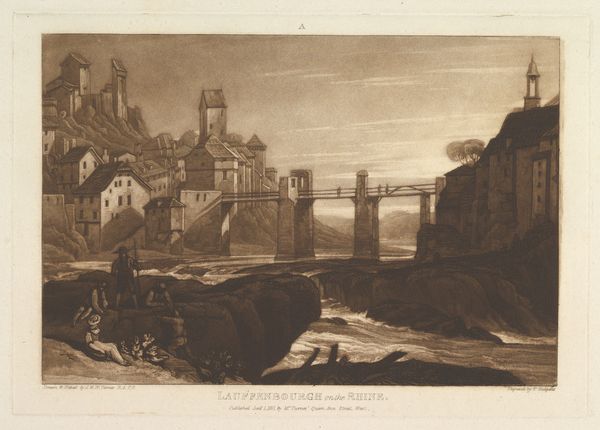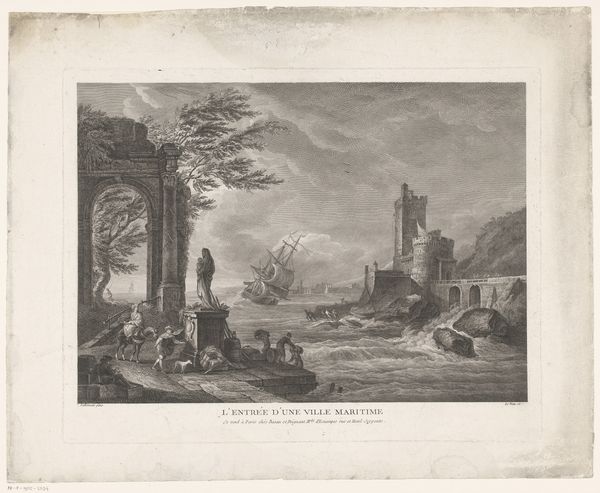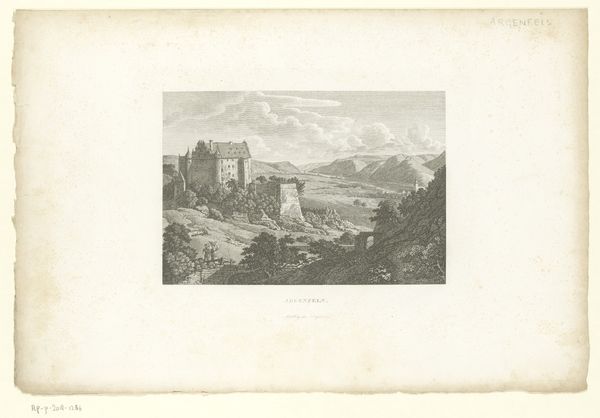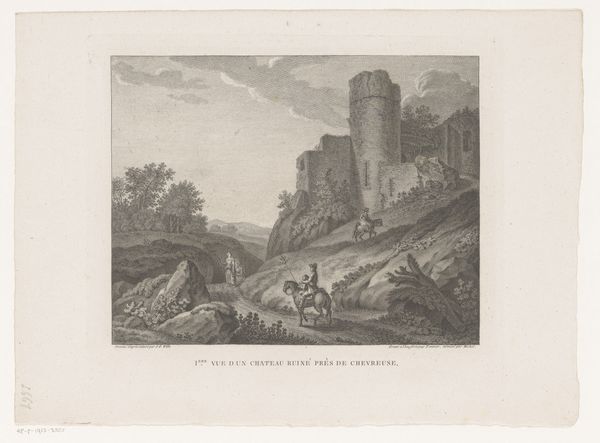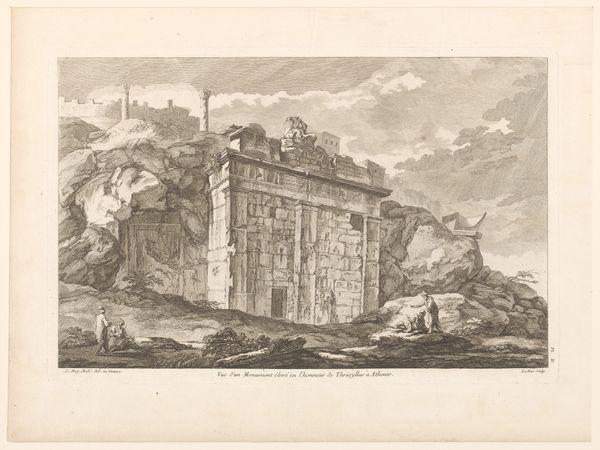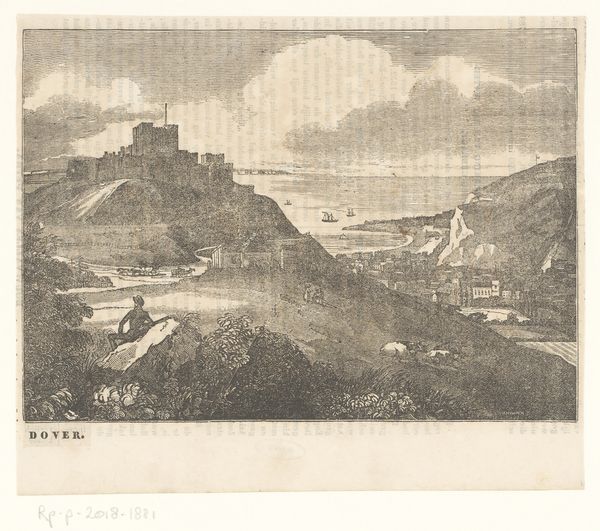
print, engraving
# print
#
old engraving style
#
landscape
#
romanticism
#
history-painting
#
engraving
Dimensions: height 116 mm, width 154 mm
Copyright: Rijks Museum: Open Domain
Curator: Today, we're examining "View of the Saint-Maurice Bridge over the Rhone," an engraving from 1837, housed right here at the Rijksmuseum. It exemplifies the Romantic sensibility that prized sublime, imposing natural settings. Editor: Immediately, I'm struck by the dramatic contrast. The rugged mountains loom in the background, dwarfing the small human figures gathered by the river. It gives this overwhelming feeling of nature's power over us, something that is perhaps even more profound given the state of our environment today. Curator: Precisely. The print captures not only the geographical grandeur of the Swiss Alps and the Rhone, but also reinforces ideas popular at the time of humanity's relatively insignificant presence in this expansive landscape. You see the meticulous detail in the rendering of the mountains, using fine lines to capture light and shadow, which contrasts with the comparatively generalized depiction of the figures, who are local people going about their daily life. Editor: Yes, the figures are so small! They really do emphasize the unforgiving reality of living in such close proximity to an overwhelming, even potentially dangerous nature. They almost seem consumed and framed by it, and I start to wonder about the power dynamics that may exist between the state and those rural communities. How might the politics of resource control or infrastructure development affect these people, living on the precipice of a natural wonder? Curator: A crucial perspective, especially as we think about infrastructure as both a binding force, in this case the bridge literally connecting communities across the river, and as a potentially disruptive intervention in existing social structures. These prints, mass-produced for travelers, became part of a much larger circuit of romantic views, feeding certain projections of the Alpine area back to other European locations. They are very important pieces to help trace shifting perceptions, social practices, and cultural representations. Editor: Thinking about its dissemination and its production of value for outside observers leads to very different way of seeing, rather than just approaching this scene with the picturesque notions of Romanticism. Thanks to the development of modern visual technology, maybe one day it's possible to reorient the romantic notions of our age in a more inclusive way. Curator: I think there’s much still to be explored in that dialogue, and in the broader discourse around representations of nature. Editor: Agreed. It invites us to consider who shapes those representations and what their agenda is.
Comments
No comments
Be the first to comment and join the conversation on the ultimate creative platform.
